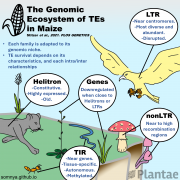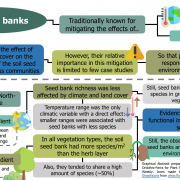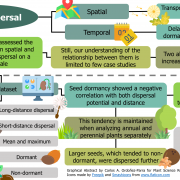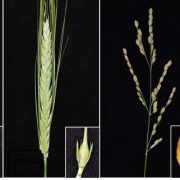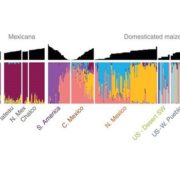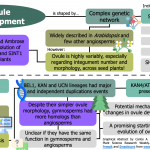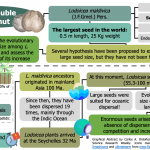Review: Seed Mucilage Evolution: Diverse Molecular Mechanisms Generate Versatile Ecological Functions for Particular Environments ($) (Plant Cell Environ.)
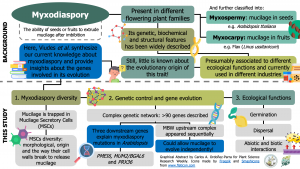 Plants with myxodiaspory release mucilage upon imbibition of seeds (myxospermy, e.g., Arabidopsis thaliana) or fruits (myxocarpy, e.g., Linum usitatissimum). This ability appears in several angiosperm families, but its evolutionary origin has seldom been studied. In this review, Viudes et al. synthesize our current knowledge about mucilage development in myxodiasporous species and provide insights regarding the evolution of the genetic machinery behind it and its ecological implications. Although similar at the macroscopic level, myxodiaspory is defined by a high diversity of microscopic traits that exhibit great variability, including Mucilage Secretory Cells (MSCs) origin and morphology, mucilage extrusion dynamic and mucilage biochemical composition. Moreover, myxodiaspory is a polygenic trait shaped by a complex genetic network of more than 90 genes. Surprisingly, all myxospermy-related mutations found in Arabidopsis natural populations have been associated with the pseudogenization of three downstream genes (PMEI6, MUM2/BGAL6, and PRX36), suggesting these genes are submitted to strong selection pressures and that myxospermy is a fast-evolving trait. Finally, the review concludes with insights about the impact of mucilage on germination, dispersal, and ecological interactions, the latter being an area that needs further exploration in future studies. (Summary by Carlos A. Ordóñez-Parra @caordonezparra) Plant Cell Environ. 10.1111/pce.13827
Plants with myxodiaspory release mucilage upon imbibition of seeds (myxospermy, e.g., Arabidopsis thaliana) or fruits (myxocarpy, e.g., Linum usitatissimum). This ability appears in several angiosperm families, but its evolutionary origin has seldom been studied. In this review, Viudes et al. synthesize our current knowledge about mucilage development in myxodiasporous species and provide insights regarding the evolution of the genetic machinery behind it and its ecological implications. Although similar at the macroscopic level, myxodiaspory is defined by a high diversity of microscopic traits that exhibit great variability, including Mucilage Secretory Cells (MSCs) origin and morphology, mucilage extrusion dynamic and mucilage biochemical composition. Moreover, myxodiaspory is a polygenic trait shaped by a complex genetic network of more than 90 genes. Surprisingly, all myxospermy-related mutations found in Arabidopsis natural populations have been associated with the pseudogenization of three downstream genes (PMEI6, MUM2/BGAL6, and PRX36), suggesting these genes are submitted to strong selection pressures and that myxospermy is a fast-evolving trait. Finally, the review concludes with insights about the impact of mucilage on germination, dispersal, and ecological interactions, the latter being an area that needs further exploration in future studies. (Summary by Carlos A. Ordóñez-Parra @caordonezparra) Plant Cell Environ. 10.1111/pce.13827


